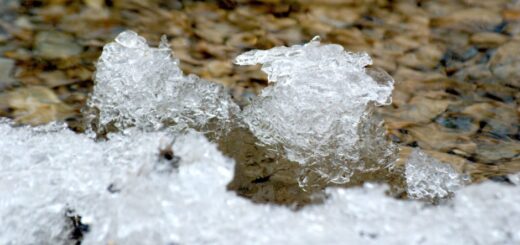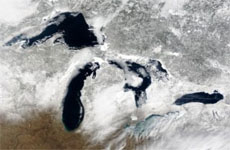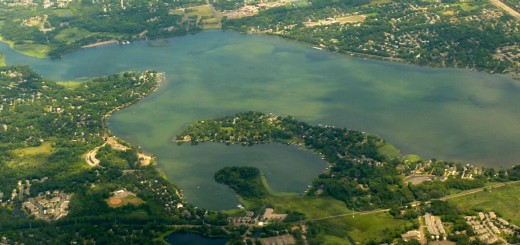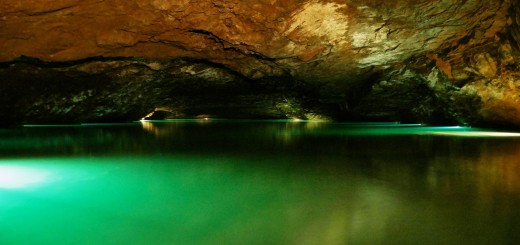A Waterfall Runs Red Into Lake Bonney
0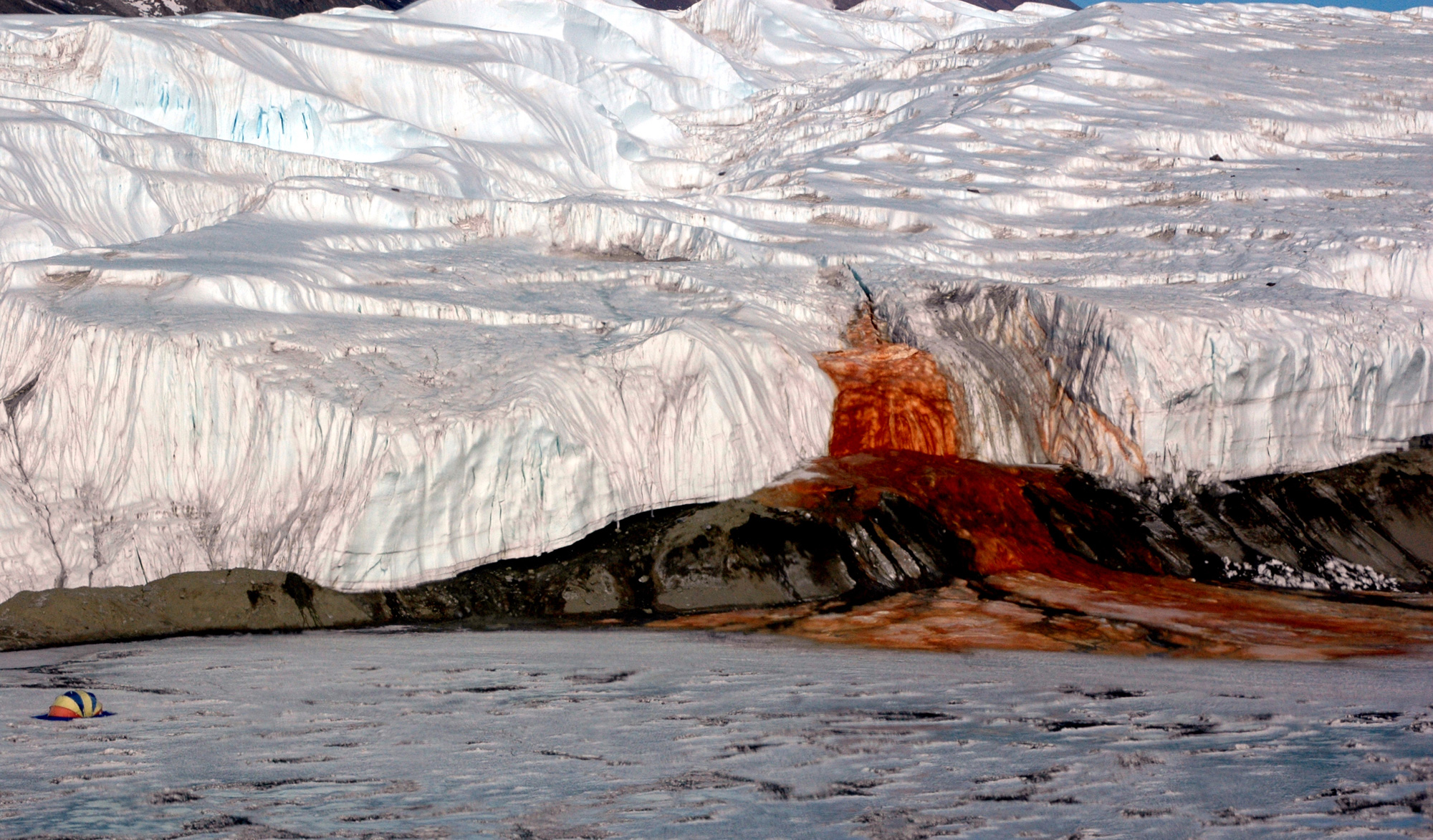
“Blood Falls” out of Antarctica’s Taylor Glacier. (Credit: Peter Rejcek, U.S. Antarctic Program, National Science Foundation)
Lake Bonney is a saline water body in Antarctica’s McMurdo Dry Valleys, an area with extremely low humidity. The lake is permanently covered with ice.
With little rain or snow, the lake relies on a waterfall running down the side of nearby Taylor Glacier. These falls are anything but ordinary, coming down in a shimmering red-orange – they’re nicknamed “Blood Falls.”
They come out five stories up through a gash in the glacier that spews iron-rich water from a lake one-quarter mile beneath the ice. Its water is cut off from the atmosphere, devoid of oxygen and ultra saline, about three times saltier than seawater.
So what makes the falls a bloody red?
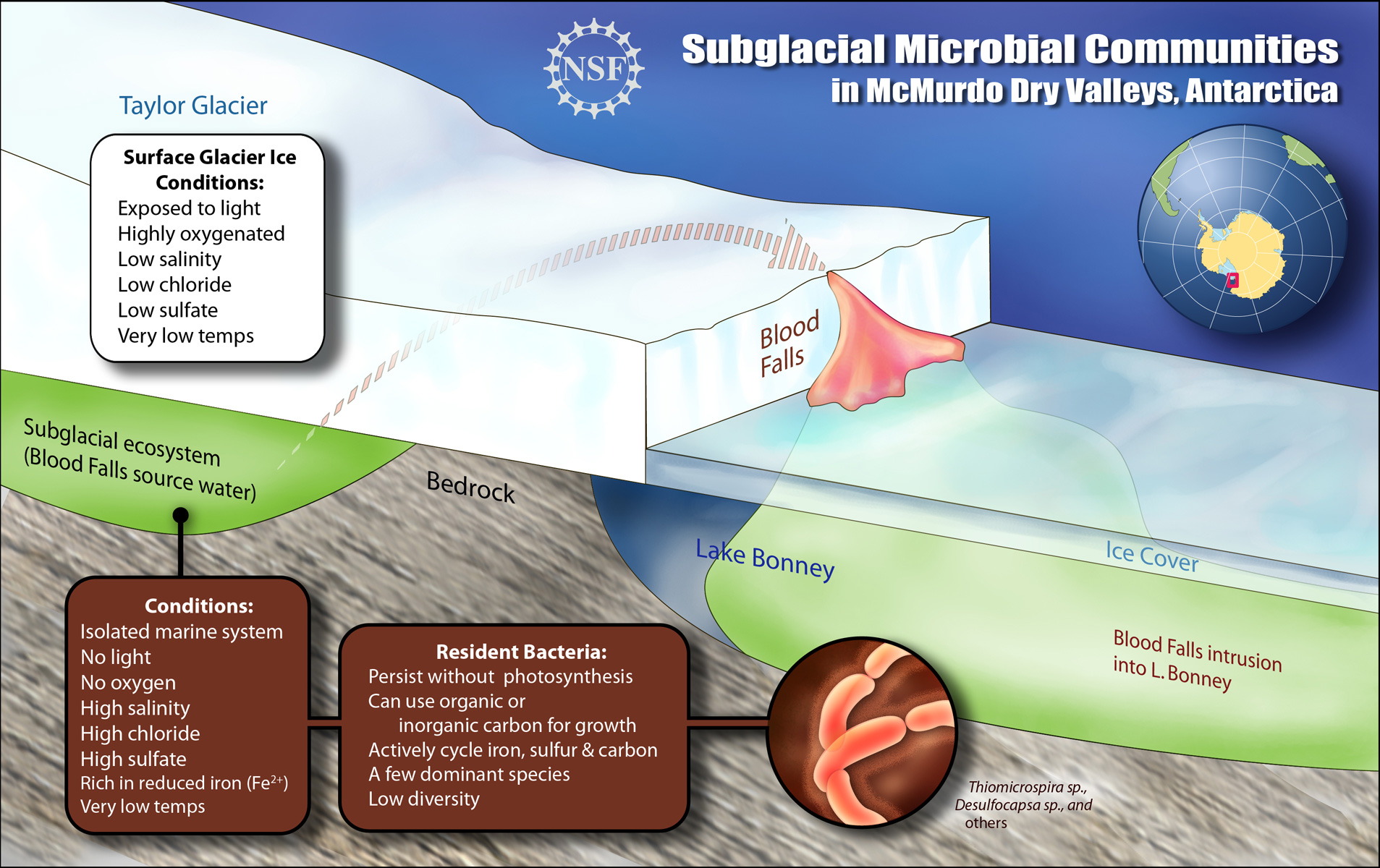
A schematic cross-section of Blood Falls showing how subglacial microbial communities have survived in cold, darkness and absence of oxygen for a million years in brine water below Taylor Glacier. (Credit: Zina Deretsky, National Science Foundation)
Griffith Taylor, the scientist who discovered them in 1911, believed the hue was caused by red algae. But a researcher at University of Wisconsin discovered iron salts in the falls during the 1960s. The eerie flow is created when these salts come into contact with oxygen and rust.
Besides the color this process creates, these salts affect more than what meets the eye. Microbes in the subglacial lake (believed to be left from an ancient ocean) have to find oxygen somewhere – so they break apart sulfates. After they’ve harvested the oxygen they need, iron in the water contributes to a reaction that restores the sulfates so they can be broken down again.
Without the salts, ancient microbes wouldn’t inhabit the lake beneath Taylor Glacier. And they wouldn’t have been able to evolve, undisturbed, for millions of years. Researchers have so far been skittish about drilling into the lake because they don’t want to disturb the time-tested process. Who knows what scientific mysteries the microbes can solve.




